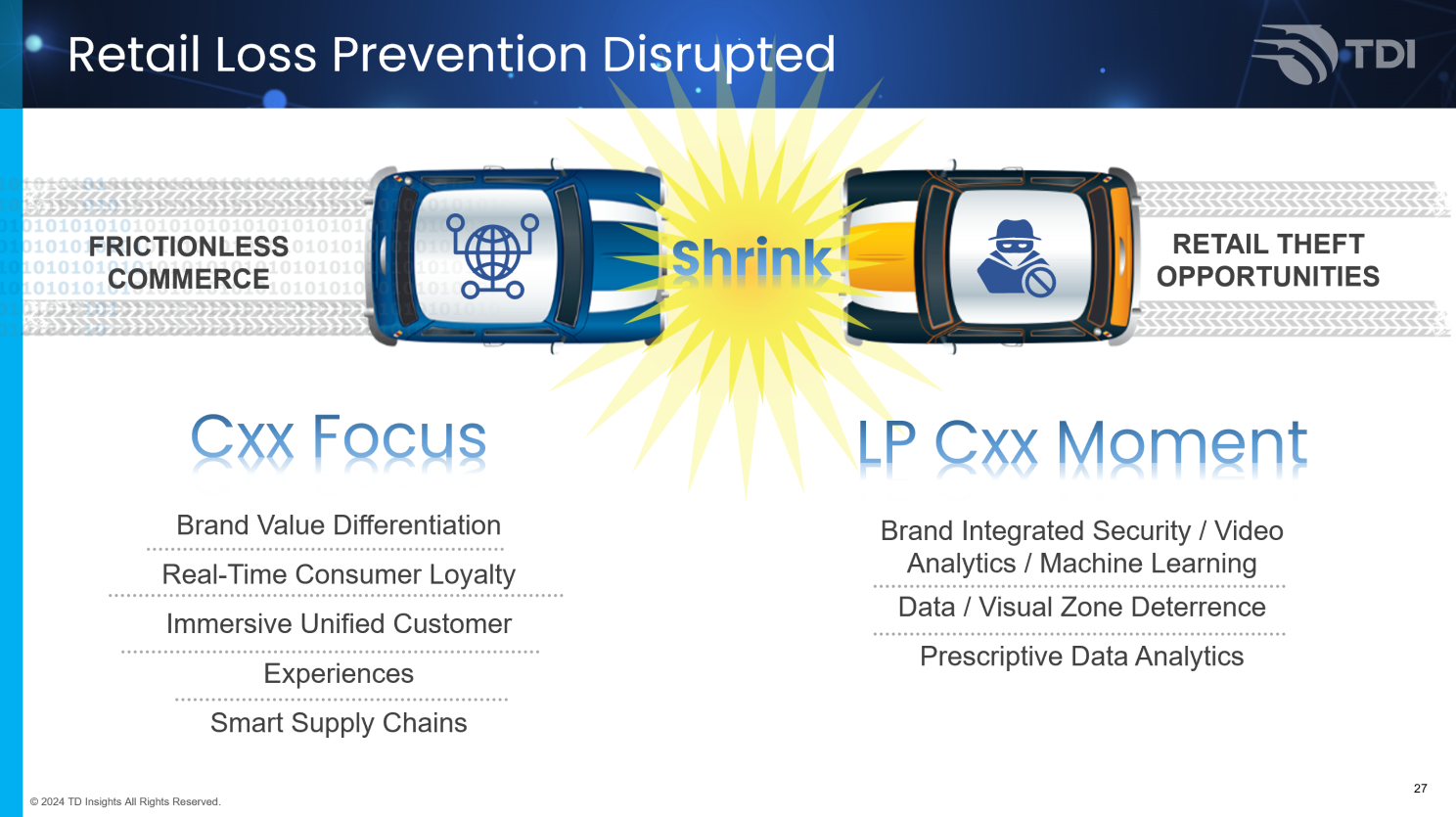“(Self-Checkout) is facilitating errors, and in some cases, the steal.” — Santiago Gallino, Associate Professor at the Wharton School
According to the latest NRF Security Survey, retail shrink represents $112.1 billion in losses, up nearly 20 percent from the previous year. Similar high shrink growth rates can be seen in other countries such as the UK where in the latest British Retail Consortium research, customer theft, doubled to just shy of £2 billion ($2.5 billion).
As I predicted many years ago, the problem of retail shrink is on a collision course with frictionless commerce consumer trends. This growing challenge actually brings new positive opportunities to both retail and the loss prevention function.

The shrink challenging counter revolution taking place in the retail industry, led by younger generations, is frictionless commerce. Over 50 percent of consumers will switch to a merchant with less friction in the shopping experience, and 41 percent of all consumers will pay more for simple, fast, and efficient shopping experiences.
Specific to self-checkout, the 2024 Digital Commerce Index found that 43 percent of consumers favor self-checkout when shopping in a grocery store. By age range, that preference is even more interesting with 55 percent of 18-29 years old favoring it, 30-44 at 51 percent, 45-60 at 40 percent, and those aged 60-plus at only 26 percent.
The genie is out of the bottle in terms of increased frictionless commerce in all retail sectors.
Stealing at Your Local Self-Checkout
The pandemic accelerated negative trends that were already underway as it relates to retail crime. Below is a summary chart on this growing problem from my latest keynote presentation “The Disruptive Future of Retail.” Note the challenges for retailers when they increase friction by locking up products.
Self-checkout has introduced further challenges to retail theft. One study of retailers in the United States, UK, and other European countries found that companies with self-checkout lanes and apps had a loss rate of about 4 percent more than double the industry average.
Interesting findings from a Lending Tree survey include:
- Almost all Americans (96%) have used self-checkout at one point or another. Most Americans say they enjoy it for speed and convenience, but 69% of users believe the machines contribute to shoplifting.
- 79% of self-checkout users diligently ensure each item scans, 21% admit to accidentally taking an item—and guilt didn’t get the better of the 61% who kept it anyway.
- 15% of self-checkout users confess to purposely stealing. While 60% of those who have stolen felt remorseful and 33% say they’ve been caught, 44% say they’ll likely do it again.
- 31% of Gen Zers and 21% of millennials have purposely taken an item without scanning it.
- The self-reported value of the stolen goods is $60, on average. Among those who plan to steal in the future, 46% say they’ll target items more expensive than anything else in their cart, while 37% will help themselves to essentials like food, water, or health goods.
- While 23% of self-checkout users think they may have witnessed someone else steal from a machine, 45% say they did nothing about it.
- Some consumers have been hit with false accusations, as 10% of self-checkout users say they’ve been wrongfully accused of taking something. That figure rises to 17% among Gen Zers and 14% among millennials.
The thieves themselves are getting better organized and online you can even find blogs that will teach you how to steal specifically at self-checkouts. In the example that I have linked, you will learn about the ol’ switcheroo, the pass-around, and the cut and run.
These challenges have led multiple retailers to scale back their self-checkout implementations. Dollar General, which had moved to exclusive self-checkout, is the latest to reverse course on the technology. Walmart earlier this year pulled back starting in their New Mexico Stores, as is Shoprite in Delaware. Five Below is not getting rid of self-checkout, but is increasing staffed cashiers. Target has started limiting 10 items at self-checkout. Costco is adding more employees to monitor self-checkout.
Self-Checkout and Frictionless Commerce Are Here to Stay
In addition to consumer preferences for frictionless commerce, labor costs and labor shortages are driving self-service technology deployments. Not surprising, Statista listed cashiers as the highest projected change in employment between 2021 and 2031.
Your smartphone is already your everything self-service device. Younger generations are demanding greater innovation in retail, much of which is frictionless. Again, from my future of retail presentation, here is a peek of what they are demanding next.
Note the willingness of younger generations to give up more privacy in exchange for greater value in the shopping experience.
Examples abound on how retailers are leveraging technology in addressing both the retail self-service challenges and decreasing friction:
- Amazon continues to experiment with their Go totally frictionless stores. However, new research suggests that cashier-free stores are unlikely to break 1 percent of the global retail in-store market due to continued low demand.
- Thousands of stores are deploying AI technologies at self-checkout point-of-sale to detect and deter retail shrink.
- Sam’s Club is replacing the practice of verifying receipts as shoppers exit the store with AI-powered technology that visually scans customers’ carts.
- Carrefour has deployed 2,400 smart carts which increase average basket size by up to 75 percent compared to regular carts or self-checkout.
The self-checkout horse, ridden by frictionless commerce, is out of the gate and will win the consumer race.
Self-checkout still needs fine tuning as a strategy for greater consumer independence, both in stationary and mobile editions. Frictionless commerce is the next generation consumer shopping experience of choice. New technologies will be required to address the short to medium term challenge that is ‘The Steal’.